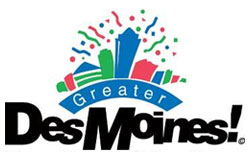I had the opportunity to attend last week’s CASRO Online 2012 conference at the beautiful Encore hotel in Las Vegas. It was two days packed full of learning, focused on panel quality and engagement, the impact of survey routers, interview length, and sharing new ideas for best practices. Quester’s technology was featured in a presentation given by David Brandt and Lee Markowitz of the Ipsos Open Thinking Exchange. More on that in our next post!
One of the sessions I found to be the most insightful was the “Panel of Panelists” session at the end of the day on Thursday. The CASRO team brought in eight panelists to share their experiences as respondents in online surveys. The panelists who took part in this session were members of anywhere from four to fifteen separate panels, with most estimating that they are members of around eight different panels. Most seemed to be very active panelists; taking surveys nearly on a daily basis.
As would be expected, most of the panelists shared that their rationale for participating in surveys is the incentives. One mother of six shared that she is able to purchase items for her children, like new tennis shoes, using her Amazon points, while another noted that he’s actually covering the mortgage on a lake cabin with the money he collects from participating in online surveys as well as focus groups.
However, the idea of having a voice, and contributing to the process of making products better was also a key driver for these panelists. They enjoy sharing their opinions and feeling as though their voice makes a difference.
Panelists were also asked to share what they dislike about the surveys they receive, to offer advice to us as an industry on how to improve their experience. Lengthy screeners tended to be the most common frustration, as panelists sometimes felt that they’d already taken the survey only to be told that they didn’t qualify. Others mentioned multi-variable questions that require them to “tic” “pages full of grids.” Other frustrations were tied to issues with redundant questions, or errors in the branching logic that resulted in questions that didn’t make sense – for example, asking whether or not they have children, responding no, but then being asked the age of the child.
Visually appealing surveys were appreciated by the panelists, with some noting that it’s much easier to work with a more interactive interface than simply click a tiny check box or radial button. Panelists also recommended incorporating an “accurate” progress bar in every survey, so they know how much farther they have to go. And much to my delight being from Quester, panelists also noted that “getting to write in” their answers in the form of open-ends was “engrossing” to them as well, and helped keep them engaged with the survey.
This panel exercise inspired us to begin work on our own exploratory panelist study, to learn more about what panelists really think about taking surveys – and interacting with Socrates. We’ll be launching our initiative in the next several weeks, so stay tuned for our results!

